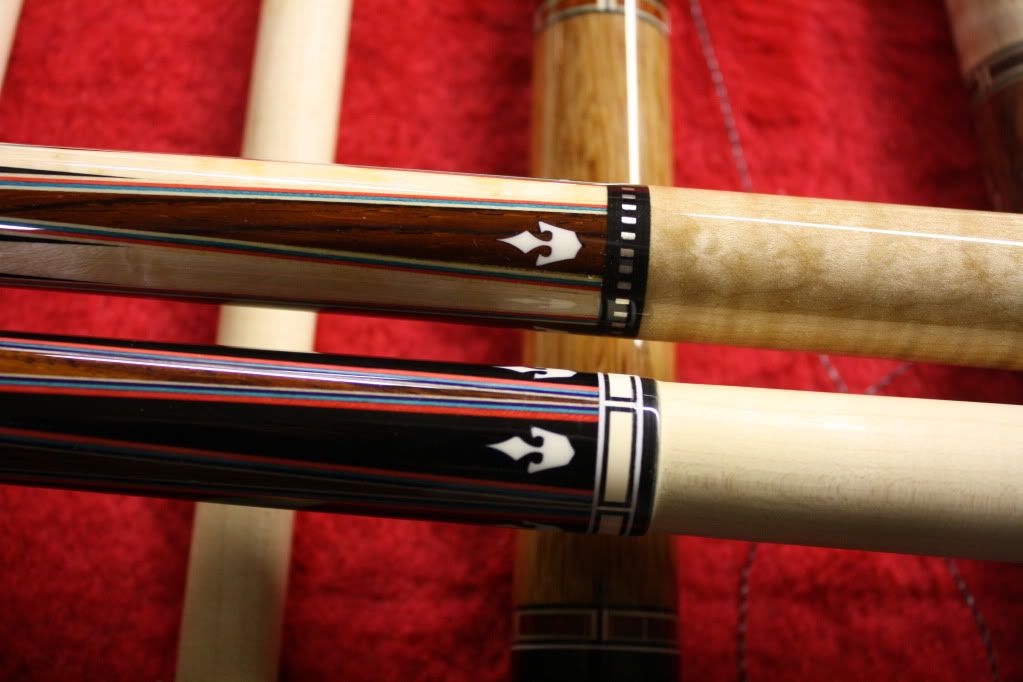1) I wrote, EXACTLY:
"I think any cuemaker who fails to hand cut sharp corners in ANY cue he's selling is just plain lazy - IF the design benefits from a crisp, sharp look, that is."
Not addressed to Searing, at Searing, or having anything to do with Searing. I simply gave my opinion of sharp corners versus rounded corners - WHICH IS WHAT THE O.P. REQUESTED - and I went on to point out that it's up to the individual viewer to decide if a particular design warrants the extra effort of hand-cutting in sharp corners.
So all you white-knight Dennis Searing lovers can feel free to cool your jets, I wasn't intending any kind of slur toward him - I think I've seen maybe two of his cues EVER.
2) If "gUycrunch" can freely call me by any nickname he chooses ("tom") then it seems reasonable that I should be able to give him a personalized nickname as well. "Dick" seemed particularity appropriate under the circumstances, but I would hasten to point out that I didn't call him "A dick", merely "dick".
3) "guycrunch", "gaycrunch"... it's all the same to me - just a made up name for some anonymous poster. Ironically, in the small all-lowercase font on a 6" x 8" notebook screen it looks more like "gaycrunch" (at a least to my eye), but I don't really care one way or the other. Could just as easily be spelled m-i-c-k-e-y-m-o-u-s-e as far as I'm concerned - still a nonsense name.
And finally, perfect for the three of you:
http://www.youtube.com/watch?v=DrJp-DImFoM
TW
(PS: I see (as expected) no one is able to actually QUOTE me - only paraphrase and/or infer their own interpretation.)
Post #5, you say "the next question is whether Searing is capable of doing it". That was your first post in this thread. Plus, you used one of Dennis' cues for your "example". Please spin for me how that is not directed toward Dennis or his abilities.
Tom is a nickname for Thomas. While Guy was probably trying to get under your skin by calling you Tom and Tommy, it at least was not a stretch. You, on the other hand, calling him "dick" and "gay" had nothing to do with his real name. I know, I know. You'll claim you don't know (or care) what his real name is, so it could be Richard or Gaylord.
You really do believe your own line of bullshit, don't you? You also believe that it's ok to insult and bash other cue makers (Mike Lambros and Barry Szamboti on cuezilla), disrespect them (cutting off Bill Schick and deriding others at the ICCS cue makers roundtable) and generally talking down to pretty much everyone that doesn't sit in your inner circle.
I know I'm wasting my time (and further derailing Dean's thread) because I can't imagine you ever saying you were wrong or changing your negativity.
Scott
